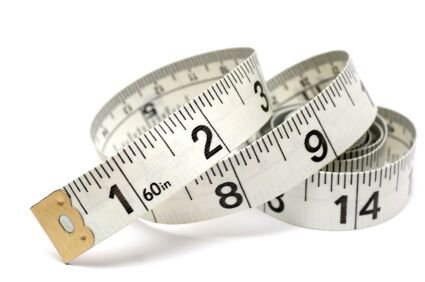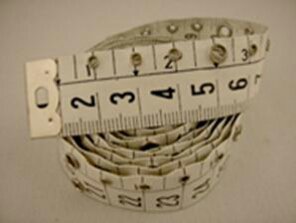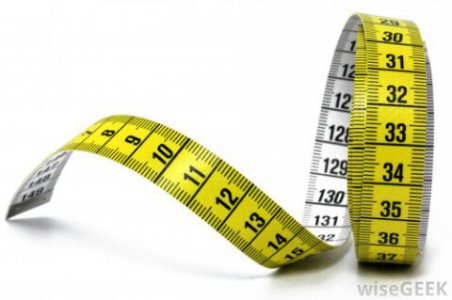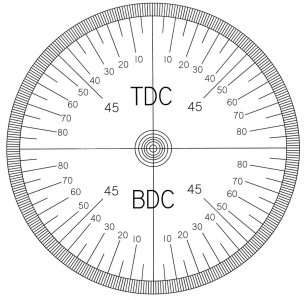- Joined
- May 20, 2014
- Messages
- 191
Okay, I'll draw up a couple of marking strips, one for each direction, and post it here when I'm done. In the meantime, I suppose one option would be to use a simple tape measure.
If you took an 'inch' tape measure, marked in 1/16" increments, you could cut out maybe a 1/4" wide strip of the edge that has the individual markings. Then, at 1/16" per degree mark, that'll be 360/16 = 22.5" for the circumference, which would wrap around a 7.16" diameter wheel.

Or, use a metric tape measure, with 1mm per degree, that'll be 360mm (14.173") for the circumference, which would wrap around a 4.51" diameter wheel. You could even leave the numeral markings on it (which would be in centimeters), and add a 'zero' to each number.


Or, you could get some automotive adhesive-backed pin-striping tape, and meticulously mark each 0.050", which would give you a 18" strip for the circumference, which would wrap around a 5.73" diameter wheel. Or find some with preprinted markings.





If you took an 'inch' tape measure, marked in 1/16" increments, you could cut out maybe a 1/4" wide strip of the edge that has the individual markings. Then, at 1/16" per degree mark, that'll be 360/16 = 22.5" for the circumference, which would wrap around a 7.16" diameter wheel.

Or, use a metric tape measure, with 1mm per degree, that'll be 360mm (14.173") for the circumference, which would wrap around a 4.51" diameter wheel. You could even leave the numeral markings on it (which would be in centimeters), and add a 'zero' to each number.


Or, you could get some automotive adhesive-backed pin-striping tape, and meticulously mark each 0.050", which would give you a 18" strip for the circumference, which would wrap around a 5.73" diameter wheel. Or find some with preprinted markings.






